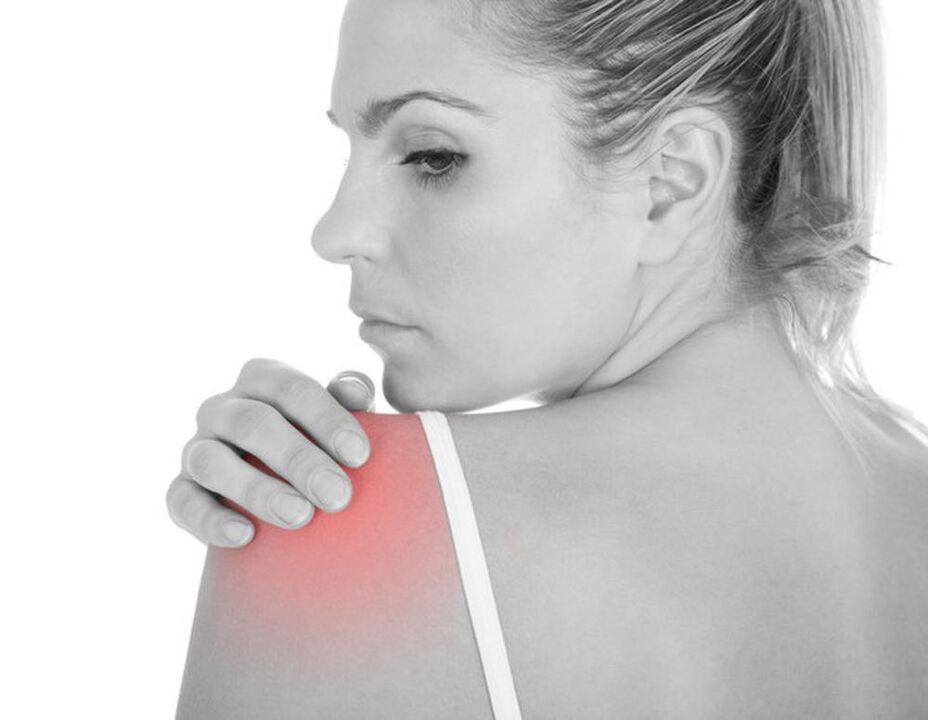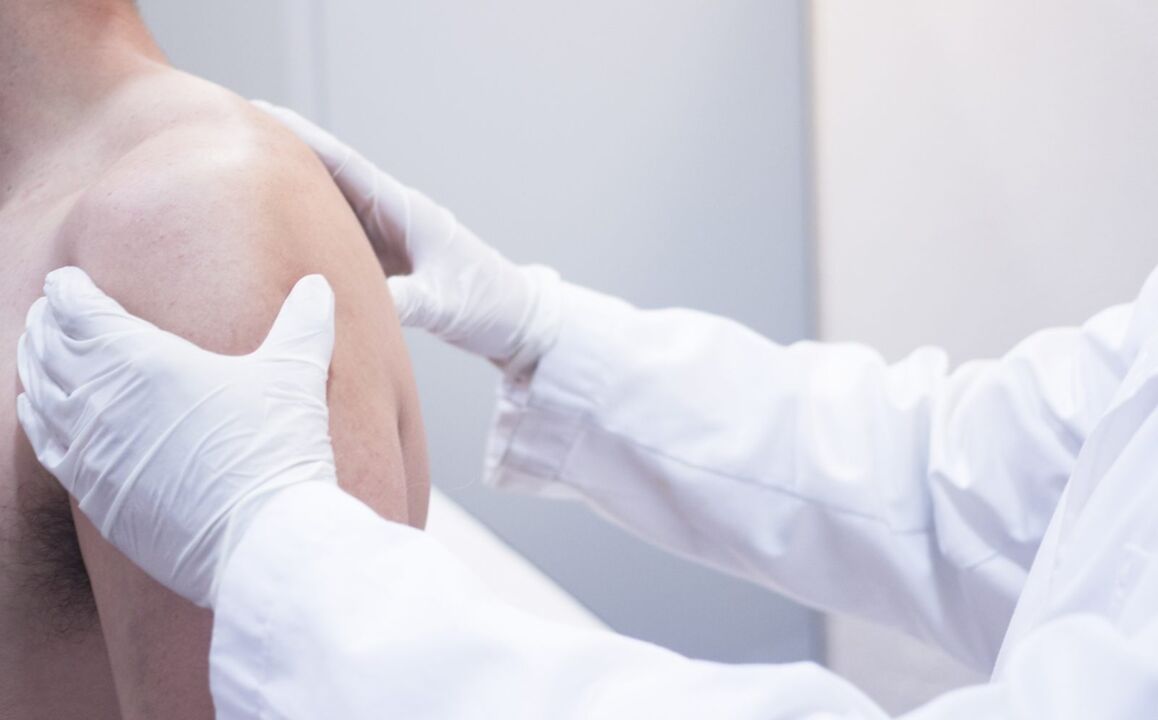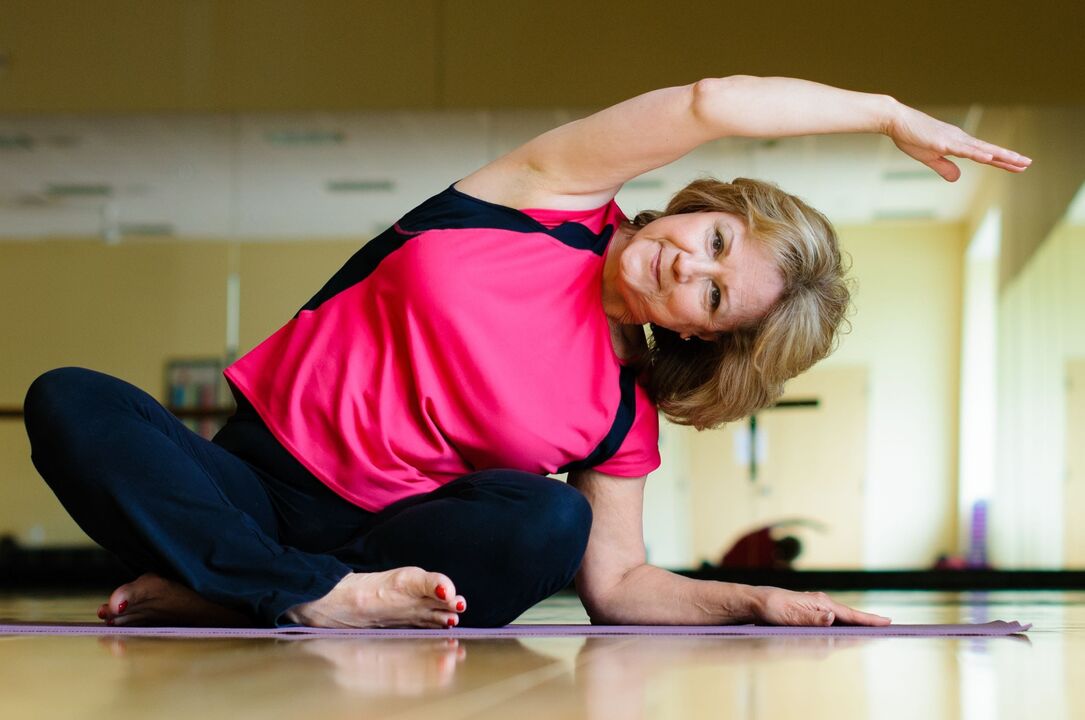
Shoulder joint problems are not as common as hip or knee joints, but they do exist, and among them it is worth highlighting shoulder joint arthrosis, the symptoms and treatment of which have their own characteristics. In most cases, these problems are dealt with by a rheumatologist. In general, it can be said that arthrosis of the shoulder joint has its own specific symptoms and is not only characterized by degenerative processes in the cartilage itself. Very often the capsule, ligament and joint bags, of which there are many, suffer.
Everything that happens, the joint is deformed, the range of motion is limited. In addition to developing such a condition, arthrosis is also accompanied by pain. The reasons for this condition can be very diverse, we will try to understand them in detail.
What makes all this happen
The inflammatory process leads to the consequences of arthrosis of the shoulder joint. It develops as a result of various factors, some of which a rheumatologist fights against, and some of which require the help of a traumatologist.
The most common cause of osteoarthritis is traumatic injury. This can be observed in athletes as a result of microtrauma, during a common dislocation or after a fracture. Then arthrosis is post-traumatic and requires its own approach to treatment.
With the pathology of blood vessels, the tissues experience a lack of oxygen, tissue dystrophy occurs. As a result, arthrosis of both the right and left shoulder joints develops. Often this condition is observed with excessive physical exertion.
The causes often lie in hormonal disorders or autoimmune damage to the cartilage. In the latter case, the rheumatologist deals with such arthrosis of the shoulder joint. Arthrosis occurs, for example, in psoriasis and gout.
It is reliable that the causes can be hidden in heredity, especially if the parents suffered from this disease. In addition, arthrosis can develop in people with congenital defects of the shoulder joint.
Symptoms can also appear due to age, as the cartilage wears down. People over 50 are at risk.

Symptoms
Osteoarthritis of the shoulder joint develops over a long period of time, and its symptoms do not show themselves. In this regard, you should constantly monitor the condition of the shoulder joint, and if even mild symptoms appear, immediately consult a doctor.
It all starts with pain, which first manifests arthrosis. Joint pain, especially in the morning or when the weather changes. When lifting weights, this symptom also makes itself felt actively, often the area around the shoulder cannot be touched. As the symptoms progress, arthrosis appears even at rest. In addition to joint pain, symptoms can appear in the back, forearm or elbow.
The symptoms are complemented by restricted movement, the main cause of which lies in the pain. A person usually cannot perform simple actions such as combing or brushing teeth.
The scratch simulation test makes it possible to find out the presence of arthrosis.
His hand is also hard to take back. If medicine and gymnastics are not prescribed in time, contractures simply cannot be avoided.
It complements the symptoms of crunch, which can appear to any degree. This occurs due to the growth of bone tissue, and in the early stages it is felt only by the person himself, and then can be heard from a distance. Puffiness joins in and not only the joint, but also the shoulder, forearm, and skin may turn red. All this indicates the presence of an inflammatory process.

In the late stages of the disease, pulling the arm to the side is a problem. This is due to growths that cover the joint area abundantly. Depending on the degree, there is a certain specificity - at each stage, the disease can manifest itself in different ways.
Depending on the degree
In the first stage of the disease, the pain bothers you only in the morning and in the evening. It can take time to get rid of the "stiffness". A sharp movement is accompanied by a slight crackling, which is not the cause of the pain.
At rest, with this degree of pain, there is no pain, just as there are no changes on the X-ray film. Everything begins in the second degree, when the manifestations become more pronounced.
In the second stage, the symptoms are complemented by more pronounced cracking and pain. Full movement of the arm is no longer possible, but the mobility of the joint remains. At this stage, the destruction and deformation of the cartilage occurs, and there are characteristic manifestations on the X-ray.
In the third degree, the process can be considered to be running, and drug treatment is already minimally successful. In this case, only light rocking movements are possible, and sharp pain becomes a constant companion. The joint area is strongly inflamed, deformity, pain joins in the area of the shoulder and forearm. Thus, post-traumatic arthrosis is most often manifested, which can be in the area of the right or left shoulder joint.

If you don't do specific exercises, your muscles will atrophy. In this case, only surgical treatment can help. However, this stage is rarely reached, only in case of permanent overloads.
In the fourth degree, there is no need to talk about the joint as such, because it simply does not exist. Post-traumatic arthrosis leads to this condition, especially if the injury is severe. Drugs, even strong ones, cannot cope with the pain. You can meet this stage in elderly and senile people. The pain often radiates to the forearm and only proper treatment can help.
Treatment
There are special medicines that can stop the disease. The most important thing is to prescribe treatment with them as early as possible, even if the arthrosis is post-traumatic.
Medicines
In the first place are non-steroidal anti-inflammatory drugs. There are a lot of them, and only a doctor can choose the right one. In addition to reducing pain, the inflammatory process also stops. Treatment with these drugs is carried out in courses, otherwise the effect on the cartilage may be negative.
In addition, the drugs have a negative effect on the mucous membrane of the stomach. It is carefully assigned to those who have problems with this body. Long-term use may cause ulcers.

Local treatment
With a strong inflammatory process, drugs based on hormones are injected into the joint. Medicines have a local anti-inflammatory effect, but this is not safe for the joint itself, as it destroys the cartilage. The local application of ointments, which also effectively relieve pain, is justified.
The system is supplemented by drugs called chondroprotectors. Treatment of the disease with these drugs takes a long time, but they contribute to the restoration of cartilage tissue and the normal functioning of the joint. The preparation contains glucosamine, chondroitin sulfate and hyaluronic acid. The effect persists for a long time, even after stopping the drugs.
Physiotherapy and gymnastics
There are many techniques that practically do not use drugs, but allow excellent results. With this disease, treatment is carried out with the help of:
- magnetotherapy;
- therapeutic baths;
- laser;
- ultrasound;
- dirt.
In parallel, special exercises are performed to increase the range of motion of the joint. Gymnastics has many techniques that are prescribed depending on the degree and stage of the disease.

Exercises are best performed under the supervision of an experienced physician who will select the optimal one.
Operation
If exercise and medication do not help, surgery must be performed. A shoulder joint endoprosthesis can solve the problem. They completely replace everything that is old and worn out, the prosthesis itself is made of metal or ceramic. The lifespan of such an implant is approximately 15-25 years.
Treatment of the disease is very difficult and not always possible. There is only an integrated approach to success, in which the treatment consists of drugs supplemented with gymnastics or special exercises, physiotherapy. I am particularly concerned about the disease in the right shoulder, as this is the hand that works.
It is better to treat the disease at an early stage and not to overdo it. If arthrosis is treated in the first stage, many negative consequences can be avoided. But it is not recommended to treat this disease independently.
































